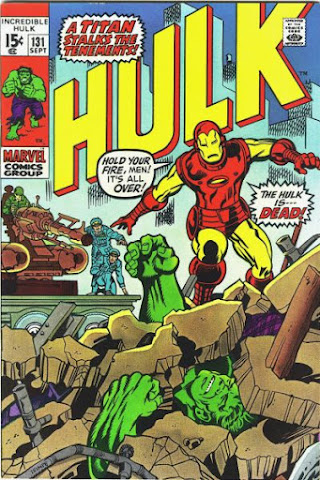Thanks to Charlie Horse 47 and Killdumpster for their sponsorship of this post, via the magic of Patreon.
***
What was the first American super-hero comic you ever read?For me, it's always been unclear as to whether it was Amazing Spider-Man Annual #6 or a coverless Superman comic featuring Lois Lane and a piano. The latter having been obtained from a jumble sale at my local community centre.
Because of it being coverless, just what that Superman comic was has always been a mystery to me and many years have I spent trying to track it down.
But now I've triumphed and can announce it was Lois Lane #65 The Musical Murder of Superman from way back in 1966.
Before anyone panics, I should point out that, despite its title, Superman's not murdered at any point in the story - not even slightly.
However, that doesn't matter because, as the cover reveals, it's an imaginary tale.
This is, of course, in contrast to all those true Superman tales we've read, over the years.
In it, thanks to being zapped by a statuette, Lois becomes temporarily evil and teams up with Metropolis super-criminal Lexo, to become the nefarious Lola.
What the world doesn't know is Lexo is, in reality, also acclaimed humanitarian pianist Luthor.
Now, Lois and Luthor get married and go on a crime spree together which ultimately leads to them paralysing Superman with a symphony Luthor's composed specially for the task.With Superman out of the way, nothing can stop them! Nothing!
Unfortunately, that's when Lois' evil wears off and when Luthor's conscience gets the better of him.
You see, before he met Lois, he'd only stolen things so he could raise money for local charities. It was the bad influence of Lois that had sent him down the path of thieving for profit.
Suitably overwhelmed with guilt at their actions, the pair revive Superman from his paralysis and, still unaware that Luthor is Lexo, Superman arrests Lois, whereupon she's sentenced to ten years hard labour for her crimes. You have to hand it to the Metropolis criminal justice system, when it comes to punishment, it doesn't mess about.
 Luthor, of course, cannot stand to see his beloved Lois in prison and launches an audacious raid to rescue her, only to quickly be shot dead by a guard.
Luthor, of course, cannot stand to see his beloved Lois in prison and launches an audacious raid to rescue her, only to quickly be shot dead by a guard.
Lois convinces the courts she wasn't responsible for her crimes - that it was the statuette that had made her do bad things - and she's released but, as the story concludes, it's made clear to us - and Superman - that she'll never, ever, get over her love for Luthor.
What a tragic little story, and I have to say it's genuinely touching to see the love between Lois and Luthor, one that means they're willing to sacrifice everything for each other. To be honest, it's a much more appealing romance than her relationship with Superman's ever been.That aside, like all Superman-related stories from this era, it's completely daft but charming and its big selling point - apart from Luthor and Lois' marriage - is the art of Kurt Schaffenberger which is as consistently likeable as always.
Schaffenberger does seem to be one of those artists who get habitually ignored but he had a lovely style, a way with emotions and an obvious wit, and I can't remember him ever turning in an art job that wasn't completely impeccable.
The script's by Jerry Siegel, lending the tale a pleasing tie to the characters' very beginnings.
So, there you go; my twin introductions to American super-heroics were Amazing Spider-Man Annual #6 and Lois Lane #65 and, to be frank, there could be worse ways to first encounter the full colour derring-doings of colour-packed derring-doers.
And how appropriate that those two books should introduce me to the two heroes who are totemic of America's two biggest comic publishers. It's almost as though Fate itself was somehow guiding events...






























































































































